Choosing the best technologies for your bulbs
For most of the 20th century, the purchase of a light bulb was simple: it was enough to choose from the shelves a light bulb with a socket fitting the female part of the lighting fixture, (usually bayonet or screw, small or large) and of a power matching more or less the expected lighting intensity – 100w for intense lighting, 25 or 40w for more modest lighting.
The situation is now more complicated, for three reasons: the evolution of European regulation; the development of new technologies; and the heterogeneity of bulbs’ performances.
1-The evolution of European regulation
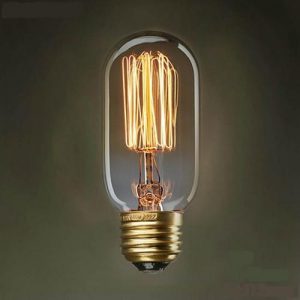
Since 2012, European regulations have banned the use of traditional incandescent bulbs, which married high consumption and low lifespan (about 1,000 hours). Only a few decorative filament models are now tolerated.
“Eco-halogene 230V” bulbs have developed to replace them.
They are a direct substitute for traditional light bulbs, plugging directly in the existing luminaires, with an energy saving of around 30%: an eco-halogen bulb of 70W illuminates like a 100w incandescent bulb.
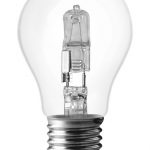
After some modest beginnings, the quality of their light is now fairly good, with Colour Rendering Indices (CRI) often greater than 95, close to the maximum of 100. They are also directly compatible with the traditional light dimmers.
On the other hand, they remain relatively energy greedy and are therefore also condemned to disappear. European regulations will prohibit their sale in September 2018, with the exception of a few models such as R7s and G9 bulbs, which remain tolerated.
2-the development of new technologies
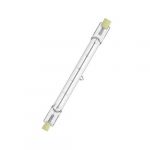
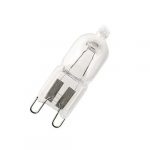
Manufacturers of light bulbs have not remained idle, and have introduced a profusion of new models that can usually be classified in two categories: Fluo-compact, and Light Emitting Diodes (LED).
The fluo-compact technology offers substantial energy savings, since these bulbs have an output fivefold greater than an incandescent bulb, and a long life span (6000 to 15 000 hours). But these bulbs use the same technology than “neon” tubes: they produce a pallid light and are often long to light up (up to a minute for low quality models).
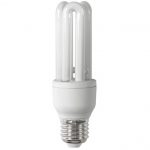
They are also quite polluting: they contain mercury and like a mobile phone, produce short-range electromagnetic fields. It is recommended to stay at a distance (more than 1m), so they are not recommended for your bedside or office lamps. These bulbs are safe as long as the mercury remains enclosed, but if they break, it is recommended to avoid breathing the fumes and to vent the room for ten minutes.
Another drawback is that these bulbs work poorly with standard dimmers.
The LED technology (Light Emission Diodes) is undoubtedly the solution for the future. Luminaires designed specifically with specially selected LEDs of high quality, if properly done and constructed with care, now work perfectly. These are the models that we at Vraiment Beau will prefer and often recommend.
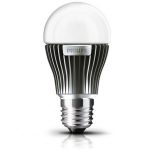
In contrast, standard LED bulbs designed to replace traditional light bulbs are still evolving and their performance remains highly dependent on the quality of their manufacturing. If you need such a bulb, we would recommend Philips or Osram bulbs, better designed and with better cooling. We have also discovered an German manufacturer, Carus (available on our site), who proposes very interesting products, with a high CRI, many of which can also be controlled remotely. For spotlights, we are also very impressed by SORAA lights, both powerful and with excellent light quality (also available on our site). Nautic, one of our “pet” lighting manufacturer equips all its spotlights with these light and the difference with “standard” spotlights is stunning.
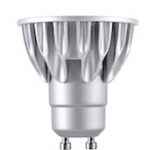
LED bulbs cost more than halogen or fluo-compact bulbs but have a longer lifespan of 50 000 hours on average. This life expectancy must be taken with some caution, as it is measured in a laboratory at a constant temperature adapted to each model, far from the conditions of real life. LED modules are often enclosed in the glass bulb, which exposes them to high temperatures (more than 65°C) and significantly reduces their lifespan (down to a quarter of the nominal life).
Last point, the LED bulbs are compatible with a dimmer only if they are labelled as dimmable, and this should be specified on the packaging or on the datasheet.
If you have to choose your bulb on your own, here are some concepts that can help you:
- The colour temperature indicates the colour of the light emitted. This colour corresponds to the colour of a flame at that temperature, and is expressed in degrees Kelvin (°K). The lower the temperature, the more orange and “warmer” is the colour, the higher the temperature, the more blue and the “colder” the colour. For example, the sunlight has a colour temperature around 5000 °K and an incandescent bulb around 2300 °K. In the house, a value of 2700 °K is often preferred, i.e. relatively warm for the living rooms; and a temperature of 3000 °K for a brighter and more dynamic white for the kitchen, the bathroom and the traffic areas. At the office and other workplaces, we recommend 3000 to 3500 °K for a more invigorating light, favouring concentration.
- The Color Rendering Index (CRI), measures the light’s ability to render “true” colours. 100 being the equivalent of natural light (the reference for colour rendering), this index must be greater than 90 or 95 to provide a good quality light. Manufacturers are increasingly communicating this index, especially if it is good. In a clothing or decoration store, an excellent colour rendition is essential to avoid distorting the colours of clothing and products, and expensive lighting with CRI above 95 will be chosen. The CRI will also be important if you want to illuminate works of art, or simply highlight a room decorated with care.
- The lumen is the unit of measurement of a visible luminous flux, i.e. the amount of light provided by a source and perceived by the eye (this idea of “as perceived by the eye” is important). With incandescent bulbs, this intensity, and thus the lighting capacity, depended directly on the power consumed by the bulb (measured in Watt). Lumen were therefore not mentioned: everyone knew that a 100w bulb would illuminate twice as much as a 50w bulb. LED bulbs on the other hand, have very different yields: regardless of the consumption of the LED bulb, it is important to check the number of lumen it delivers. Fortunately, this information is now on most bulb packages. To calculate your lumen requirement for a given illumination, you can use our lighting calculators page. By choosing carefully, we find today LEDs that deliver a powerful light, of very high quality and which, if integrated into a luminaire designed with care, will last several decades. This quality generally has a price, which corresponds to the quality of the semiconductor used, and the quality of its “packaging”: the best LEDs come integrated in a module that includes the protective heat sink. Do remain cautious with cheap LEDs, which performance can be uncertain and sometimes quite different from the announced figures. If you wish to know more about LED technology and how choose your LED, you can visit our page how to choose a LED bulb
If you do not find the answers to your questions in this guide, please do not hesitate to call our team of specialists at +33 1 45 20 60 00 or by mail at contact@vraimentbeau.com.
* * *
You can find further guidance in the following page:
- Our advices to dimension your lighting and choose your fixtures: the principles of lighting design.
- Which types of bulbs you should choose, from all the technologies now on the market - fluo-compact, LEDs etc: what you need to know about bulb technologies.
- How you should choose the LED you need, depending on your room and your expectations in terms of lighting (there is more to it than what you can read on most bulb packages): our guide to choosing LED bulbs.
- Explanation of what the various lighting units mean, and how to use them: how to speak the jargon, with lux, lumen and candela!.
- Use our calculators to size your lighting according to its purpose: our lighting calculators.
- Find your way in the jungle of the various European bulb types: our simple guide to the various bulb models.
- Read our advice on why you could consider connected lighting, and how you can jump on the train without the headaches: starting with connected lighting.
You can also find below our advice to choose and install the various types of lighting you can find in our catalogue:
- suspensions, chandeliers and pendants
- Table and desk lamps
- Wall lights
- Lighting beacons for circulation areas (indoor or outdoor)









